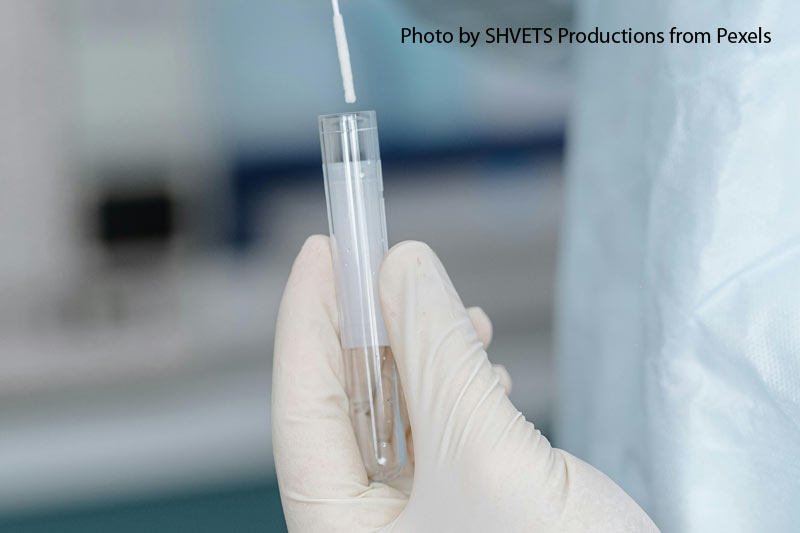Saliva Drug Tests

The Complete Guide to Saliva Drug Tests
As more companies integrate drug testing into their hiring and onboarding processes, saliva drug tests are becoming an increasingly popular way to detect recent drug use. Given that these tests are relatively new compared to urine testing or hair follicle testing, which has been the industry standard for decades, many people have questions about saliva drug tests and the testing process. This article serves as a comprehensive guide to saliva drug tests.
What are Saliva Drug Tests?
A saliva drug test is a method of screening for the presence of drugs in a person’s saliva and can be used to accurately detect multiple drugs, including:
- Cannabinoids/THC (marijuana)
- Cocaine
- Opiates, such as morphine or heroin
- Amphetamines, including methamphetamine
- Methadone
- Benzodiazepines
- Phencyclidine (PCP)
- Alcohol
These tests work by detecting the drugs directly or the presence of drug metabolites in the saliva. The use of illicit drugs can be detected as drugs enter the saliva through the bloodstream quickly (within minutes of drug use). These tests generally detect drug use in the last day or two. However, the detection window can vary depending on the drug, dosage, frequency of use, metabolism, and the individual’s physiology.
Generally speaking, the estimated detection windows for specific drugs are as follows:
- THC: 6-24 hours
- Cocaine: 24-48 hours
- Opiates: 24-72 hours
- Amphetamines: 24-72 hours
- Benzodiazepines: 2-5 days
There are typically two testing methods: laboratory analysis and on-site testing. Laboratory analysis involves sending the saliva sample to a lab, but it provides detailed results and can detect lower levels of substances. On-site testing is quicker, offering results within minutes, but it can be less accurate than laboratory testing.
What are the Benefits and Drawbacks of Using Saliva Drug Tests?
Saliva drug testing offers many benefits, which is a big part of the reason they are becoming more and more popular. They are non-invasive and convenient, as the process is simple, painless, and doesn’t require specially trained personnel. They also offer fast results and are very effective for identifying recent drug use.
For many employers, this method is ideal. It can be used for screening job candidates, for randomized testing purposes, and even for determining whether substance use was a factor in a workplace accident.
Despite the many advantages of this type of drug test, there are also some limitations that you should be aware of before conducting or undergoing a saliva drug test. For instance, this type of test has a short detection window which is limited to recent use within the last few days. By contrast, urine and hair follicle testing can often reveal use within the last several weeks or months and they can detect lower levels of drugs. Additionally, food, drinks, and oral hygiene products can impact the results of a saliva drug test, which makes it less reliable. They are also less reliable than other testing methods.
What Can I Expect with a Saliva Drug Test?
Saliva drug tests are minimally invasive, which is a huge benefit to this type of test. Before taking the test, the individual undergoing testing should avoid eating, drinking, or smoking for at least ten to thirty minutes. During administration, a sterile swab is placed in the mouth and rubbed along the gums and inside of the cheek for about 60 seconds. The swab is then placed into a collection tube where it can be tested on-site with a rapid testing device or sent to a laboratory for further analysis.
While the test is relatively easy to administer, those undergoing a saliva drug test should understand what the results mean. A positive result usually requires additional confirmation through more specific testing methods, such as gas chromatography-mass spectrometry. Therefore, if you receive a positive saliva drug test result, you should expect to be required to undergo additional testing, such as urinalysis or hair follicle testing.
A negative test result generally indicates that the tested substances are not present or are below the detection limit, although due to the limitations of this type of test, a negative test does not always guarantee no drug use, especially use that occurred outside of the detection window. Additionally, invalid test results sometimes occur and can be due to improper sample collection, contamination, or equipment failure. Re-testing is often required when invalid results occur.
All entities administering a saliva drug test should obtain informed consent before conducting the test and should have proper processes in place to ensure the privacy of the test results and the individual’s personal information.
Saliva drug testing is likely to become more common due to the ease of this type of testing and the speed at which results are obtained. Understanding what these tests are, their advantages and limitations, and how the test is administered is crucial before undergoing a saliva drug test.
